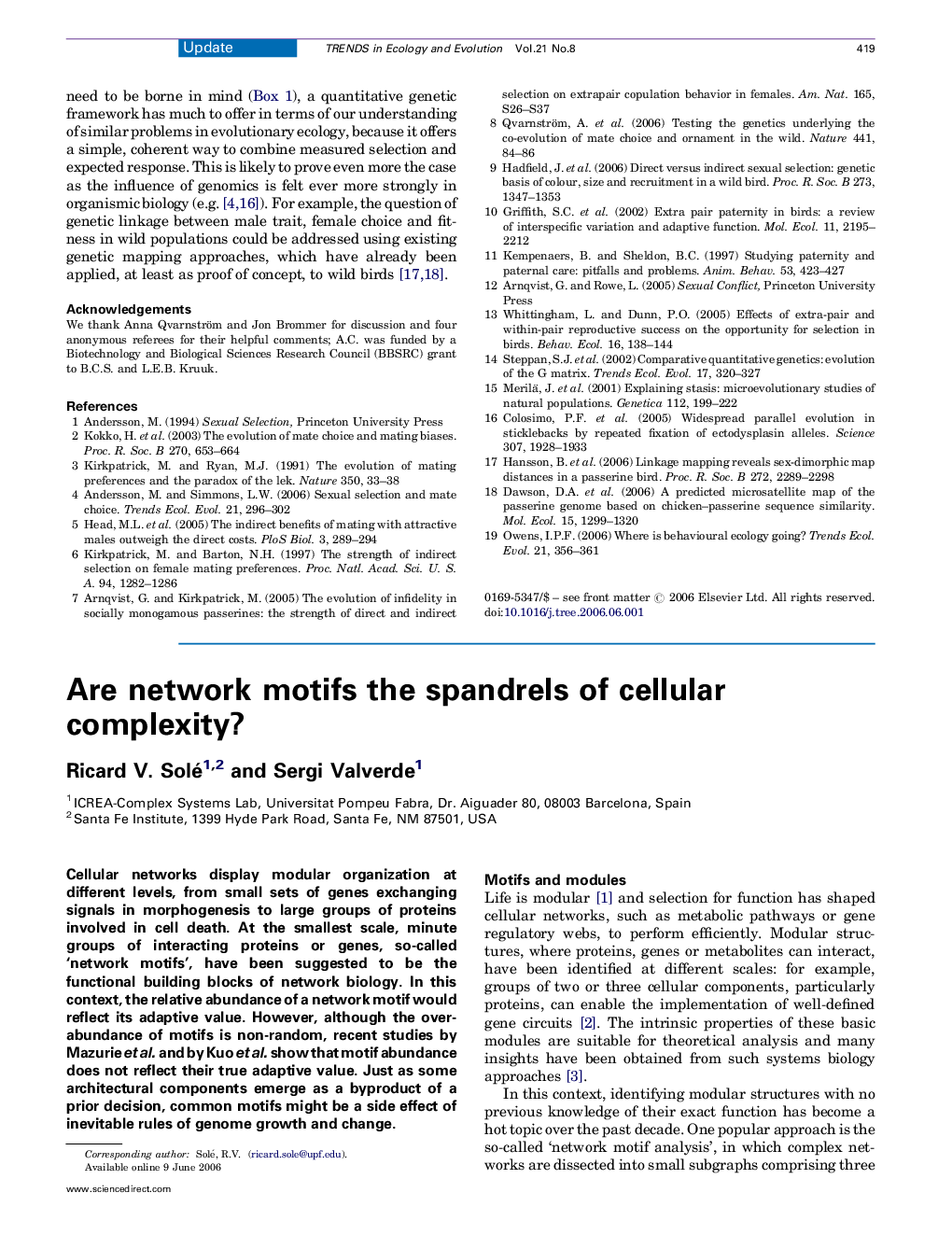| Article ID | Journal | Published Year | Pages | File Type |
|---|---|---|---|---|
| 143010 | Trends in Ecology & Evolution | 2006 | 4 Pages |
Cellular networks display modular organization at different levels, from small sets of genes exchanging signals in morphogenesis to large groups of proteins involved in cell death. At the smallest scale, minute groups of interacting proteins or genes, so-called ‘network motifs’, have been suggested to be the functional building blocks of network biology. In this context, the relative abundance of a network motif would reflect its adaptive value. However, although the overabundance of motifs is non-random, recent studies by Mazurie et al. and by Kuo et al. show that motif abundance does not reflect their true adaptive value. Just as some architectural components emerge as a byproduct of a prior decision, common motifs might be a side effect of inevitable rules of genome growth and change.
